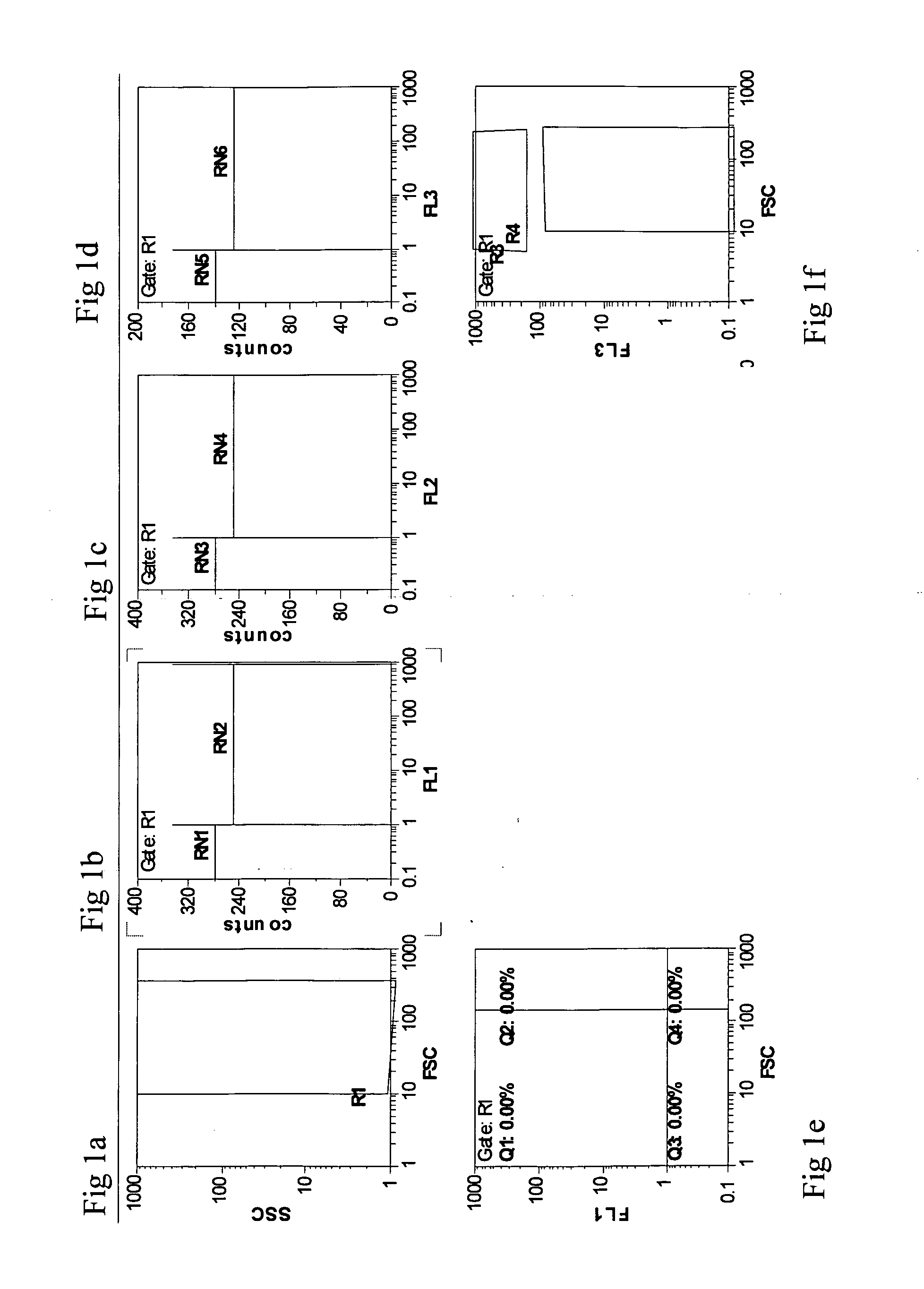Methods and kits for determining sperm cell number
a flow cytometry and sperm cell technology, applied in the field of flow cytometry method for determining sperm cell number, can solve the problems of inherently limited methods, inability to teach white blood cell analysis, size analysis and background analysis for cell count determination,
- Summary
- Abstract
- Description
- Claims
- Application Information
AI Technical Summary
Benefits of technology
Problems solved by technology
Method used
Image
Examples
example 1
Comparison Between Traditional Cell Counting Method and the Flow Cytometry Method of the Present Invention
[0110]Materials and Methods
[0111]Traditional sperm cell counting: Sperm cells and WBCs were counted from two semen samples by a professional laboratory technician. The counting was performed using a light microscope, slides and a specific stain according to the latest manual of the W.H.O [World Health Organization. Laboratory manual for the examination of human semen and sperm-cervical mucus interaction. 4th ed. New York: Cambridge University Press, 1999]. The counting procedure was repeated three times for both semen samples and the mean result was recorded.
[0112]Flow cytometry sperm cell counting: Sperm cells were counted using four separate tubes:
[0113]Tube a=background;
[0114]Tube b=white blood cells;
[0115]Tube c=DNA; and
[0116]Tube d=Total cell number
[0117]The semen samples were diluted 20 fold in Assay buffer (PBS / BSA). Specifically, 0.5 ml of sample was diluted with 9.5 ml ...
example 2
Evaluation of a Low Count Semen Sample Using the Flow Cytometry Method of the Present Invention
[0158]Materials and Methods
[0159]Traditional sperm cell counting: performed as described herein above for Example 1.
[0160]Flow cytometry sperm cell counting: performed as described herein above for Example 1 except that the total count in tube (d) was read by setting the instrument to analyze the tube for three minutes (3) and not to be limited by reaching a specific number of events—thereby allowing screening of large volumes of sample, enabling detection of even a few number of sperm cells.
[0161]Results
[0162]Five semen samples were analyzed by the traditional method and defined as azoospermic (zero sperm cells). Using the Flowcytometric method of the present invention, a few sperm cells were noticed. Further investigation of those samples by the Routine method that included centrifugation of the sample and repeated counting (10 times) of aliquots of the sample pellet also revealed a few ...
example 3
Reproducibility of the Flowcytometric Method of the Present Invention
[0163]The reproducibility of the Flowcytometric based method of the present invention was evaluated by re-testing the same sample five times and comparing the results.
[0164]Results
[0165]Table 4 below summarizes the sperm cell count results of 11 samples. Table 5 below summarizes the WBC count results of the 11 samples. The low standard deviation indicates high reproducibility of Sperm and WBC count.
TABLE 4Standard#12345Deviation189.9688.8988.6488.1589.680.75274.4170.5765.7469.8472.743.29326.4422.9723.4317.1625.323.59430.6629.5331.5929.828.041.33524.0223.6723.4821.5725.521.41629.6929.9329.930.8830.290.47745.3945.1643.8147.7344.071.55853.7350.2551.1552.0651.331.30925.327.8125.8224.3426.991.371059.4562.9665.5363.3864.842.361155.649.7450.8750.4851.972.31
TABLE 5Standard#12345Deviation141.7240.5740.2636.0735.942.71240.4738.4239.4838.941.151.1238.510.728.958.348.841.0446.45.857.345.695.090.8550.520.60.560.50.480.0569.818....
PUM
| Property | Measurement | Unit |
|---|---|---|
| volume | aaaaa | aaaaa |
| size | aaaaa | aaaaa |
| size | aaaaa | aaaaa |
Abstract
Description
Claims
Application Information
 Login to View More
Login to View More - R&D
- Intellectual Property
- Life Sciences
- Materials
- Tech Scout
- Unparalleled Data Quality
- Higher Quality Content
- 60% Fewer Hallucinations
Browse by: Latest US Patents, China's latest patents, Technical Efficacy Thesaurus, Application Domain, Technology Topic, Popular Technical Reports.
© 2025 PatSnap. All rights reserved.Legal|Privacy policy|Modern Slavery Act Transparency Statement|Sitemap|About US| Contact US: help@patsnap.com

